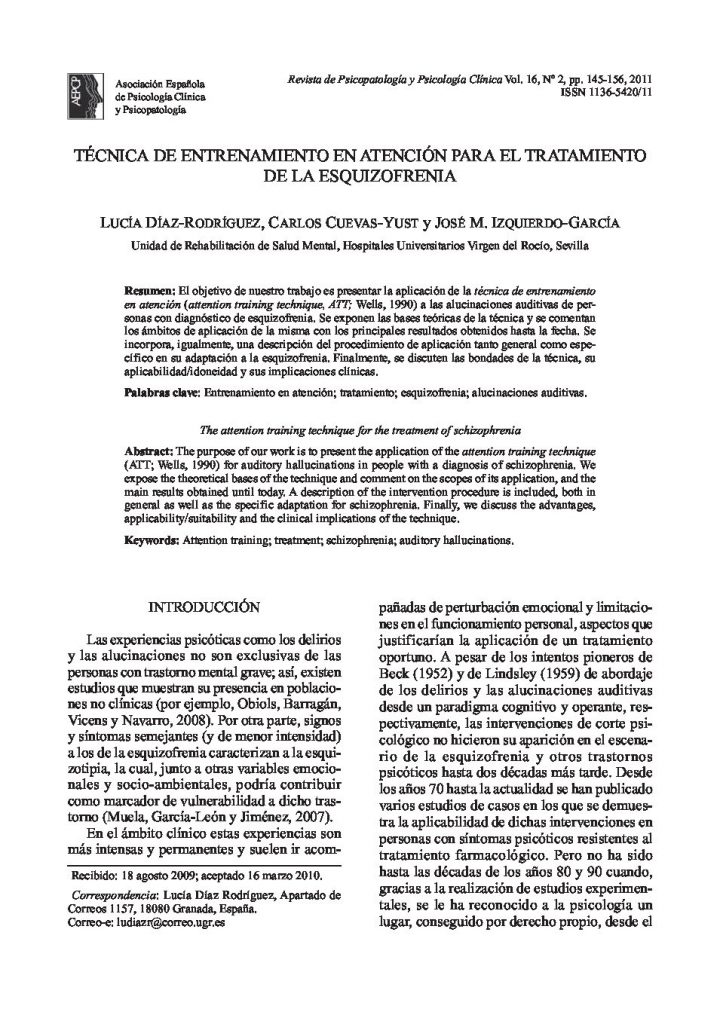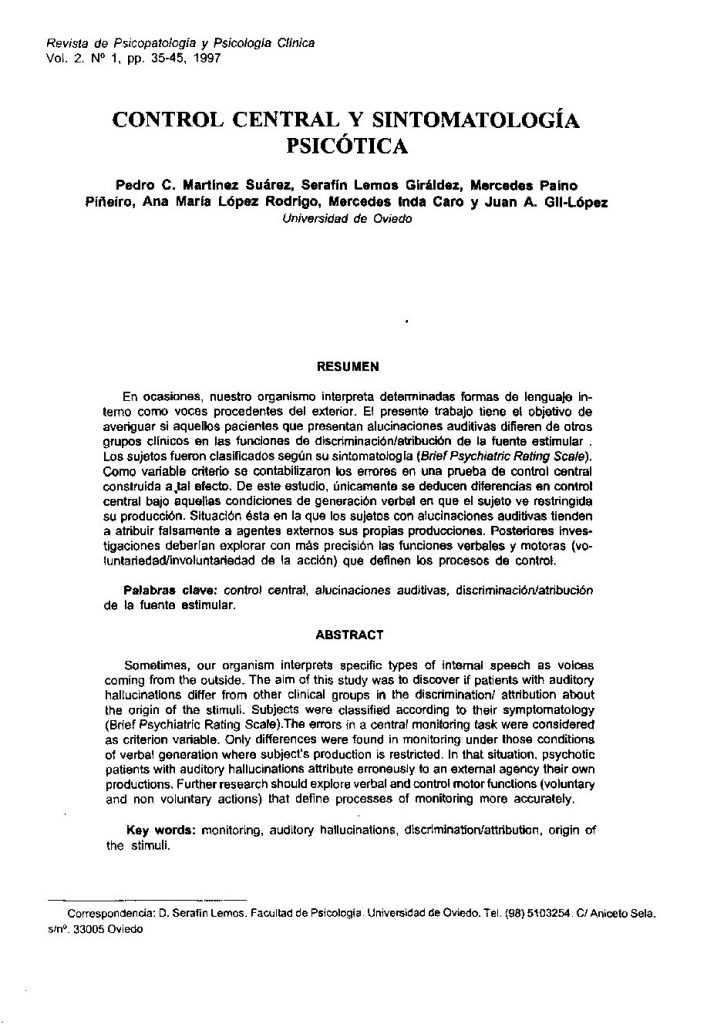Técnica de entrenamiento en atención para el tratamiento de la esquizofrenia.

- La psicología basada en la evidencia y el diseño y evaluación de tratamientos psicológicos eficaces.
- Funciones atencionales de orientación espacial, alerta y control ejecutivo en personas con trastornos del espectro autista.
- Funcionamiento ejecutivo en el trastorno de déficit de atención con hiperactividad: Una perspectiva ecológica de los perfiles diferenciales entre los tipos combinado e inatento.
- Perfil psicopatológico de niños con sobrepeso u obesidad en tratamiento de pérdida de peso.
- Patología dual y trastornos mentales en reclusos consumidores de sustancias.
- Técnica de entrenamiento en atención para el tratamiento de la esquizofrenia.
The purpose of our work is to present the application of the attention training technique (ATT; Wells, 1990) for auditory hallucinations in people with a diagnosis of schizophrenia. We expose the theoretical bases of the technique and comment on the scopes of its application, and the main results obtained until today. A description of the intervention procedure is included, both in general as well as the specific adaptation for schizophrenia. Finally, we discuss the advantages, applicability/suitability and the clinical implications of the technique.
El objetivo de nuestro trabajo es presentar la aplicación de la técnica de entrenamiento en atención (attention training technique, ATT; Wells, 1990a las alucinaciones auditivas de personas con diagnóstico de esquizofrenia. Se exponen las bases teóricas de la técnica y se comentan los ámbitos de aplicación de la misma con los principales resultados obtenidos hasta la fecha. Se incorpora, igualmente, una descripción del procedimiento de aplicación tanto general como específico en su adaptación a la esquizofrenia. Finalmente, se discuten las bondades de la técnica, su aplicabilidad/idoneidad y sus implicaciones clínicas.




